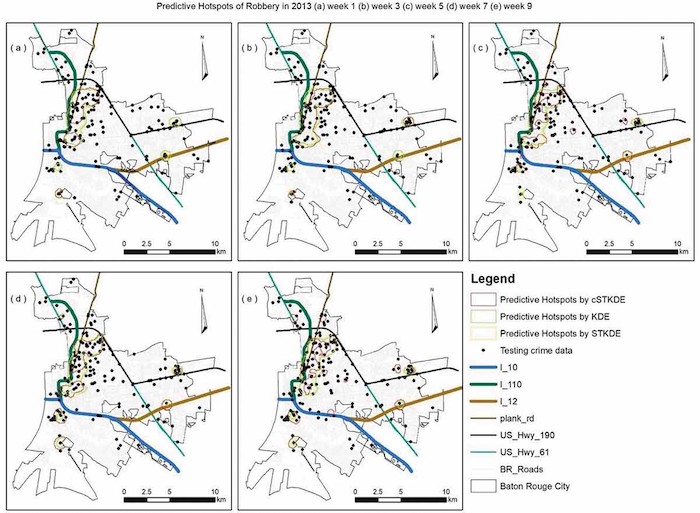
HU – A cyclically adjusted spatio-temporal kernel density estimation method for predictive crime hotspot analysis
Ya Han, Yujie Hu, Haojie Zhu, Fahui Wang
Article first published online: 11 January 2023
DOI: https://doi.org/10.1080/19475683.2023.2166584
ABSTRACT: This paper presents a new method for predictive crime hotspot analysis that further improves the kernel density estimation (KDE) method and the spatio-temporal kernel density estimation (STKDE) method by accounting for temporal crime cycles and is therefore termed the ‘cyclically adjusted STKDE (cSTKDE) method’. The case study on robbery incidents in Baton Rouge, Louisiana, shows a temporal cycle with a 6-month period of statistical significance from January 2010 to May 2018. This identified period is incorporated into the temporal kernel function of the new cSTKDE method. For validation, the Forecast Accuracy Index (FAI) and Forecast Precision Index (FPI) are used to evaluate the performance across 52 weeks in 2013. For 11 consecutive weeks since the beginning of 2013, the cSTKDE method outperforms the STKDE by 89% lower average abs(1-FAI) and 17% higher average FPI, and outperforms the KDE by 90% lower average abs(1-FAI) and 8% higher average FPI. Overall, the scenario with the best predictive accuracy by the cSTKDE is recommended over the traditional KDE or STKDE method as most feasible and effective in implementation of hotspot policing in practice.
Read the full publication in Annals of GIS.